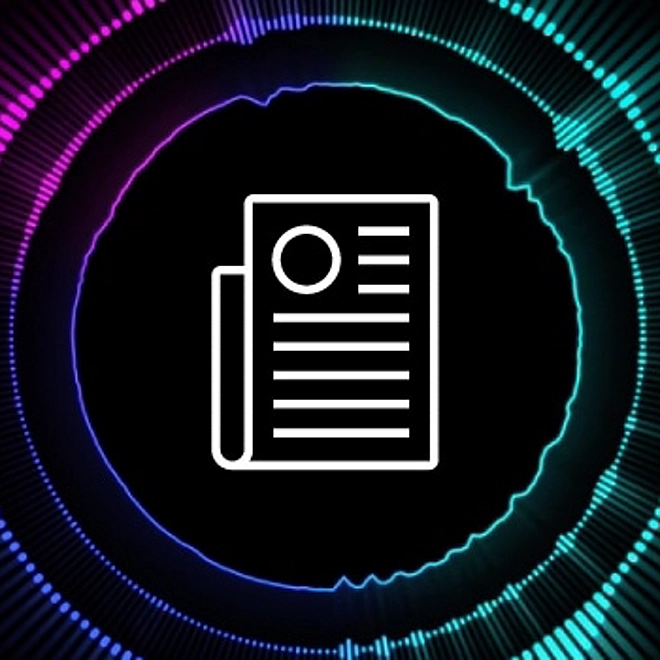Connecting the core to compete
Innovating from core to edge
Innovation is not an option. No matter what an organization’s next step is for its ERP, the ability to quickly deploy new products, services, capabilities, and business models will be essential for achieving outcomes and thriving amid disruption. For many businesses, the key will involve core-to-edge innovation—combining the strengths of an ERP with industry-specific cloud apps and core extensions.
Four Deloitte and SAP transformation specialists discuss the why and most importantly, the how of core-to-edge innovation.
Innovate at speed, create advantages
More than ever, companies are forced to innovate, digitize, and develop new business models and concepts at a pace that is often out of reach for the typical ERP, and many are turning to the cloud to help them adapt. Chip Kleinheksel, principal, Deloitte Consulting LLP, says “long gone are the times where we could take six to nine months to go do something. We need to do something in weeks, in a month. The cloud platforms we're seeing are enabling companies on the road to be able to do that.”
Enter cloud-based edge innovation. Given that disruption is a very real part of remaining competitive, companies need a platform to innovate at scale without disrupting the core. And it's not little tweaks companies must make either. According to Isabell Petzelt, Global vice president of Customer Innovation Strategy, SAP, it’s important to have a stable core that runs efficiently as possible and a platform that is agile to build that innovation at speed and at scale. This will be essential for success.
The edge solutions companies have access to now can create strategic advantages instead of just supporting them, says Eric Kase, senior manager, Deloitte Consulting LLP. “Companies want to drive their business and leapfrog the competition. Those technology trails have already been blazed with micro-services and edge solutions and can bring that advantage to life in ways we hadn’t seen or thought of.”
Always begin with the why
When organizations, regardless of industry or geography, are experiencing disruption, it becomes even more important that business outcomes are the epicenter of innovation—they must become the ‘why’ of any initiative. Smart enterprise leaders are investing only in those innovations that allow the organization to compete in the new normal. According to Petzelt, companies that have the right platform in place, and the right approach to innovation can innovate at the edge faster and with a much shorter time to value.
But never lose sight of what’s most important. “It’s not about innovation for innovation’s sake,” cautions Arjun Krishnamurthy, managing director, Deloitte Consulting LLP. “If a company is going to take a huge risk, they must continually ask what their North Star is and be very clear on it, the ‘why’. Then focus on the ‘how’.” Doing so narrows the gap between transformational efforts and realizing business value. Kleinheksel offers that by starting with the solution first, “companies run an incredibly high risk of trying to fit a square peg into a round hole, and the solution may not align to the actual hoped-for outcome.”
Why built-to-last isn’t sufficient
For better or worse, technology giants have raised the bar and most companies are competing with them in some form, either directly or indirectly. Same-day shipping is a perfect example. Five years ago, two-day shipping was the high water mark. Today, anything more than one day is an irritant. Krishnamurthy offers how ERPs that were ‘built to last’ are no way to thrive. “Being agile, nimble, and resilient has taken on a whole new, mission-critical meaning, and edge capabilities are the leverage companies need.”
Edge innovation becomes a vital solution for companies with massive ERPs built years ago (and built to last) that now must respond to market and consumer demands. Kase adds that it’s not just tech companies creating innovation pressure, it’s technology in general, and an organization that built an aging, customization-heavy system will find itself at a big disadvantage. “When you sit on an ERP system that was customized to do things you've done forever, it's hard to overcome that without an architecture that allows for rapid activation of new technologies or new capabilities to respond to disruptions.”
From Petzelt’s perspective, the good news is that edge innovation is also a viable solution for enterprises to transform their built-to-last systems into kinetic ones meaning-building on top of big, old, gray ERPs to modernize, transition and build in the agility that allows a company to quickly react to new conditions.
The edge-to-core driver’s seat
The disconnects amongst strategy, technology and business have disappeared. All of them completely rely on each other and are interdependent–something COVID-19 made evident. Regardless of the market share a company had, when global stay-at-home orders took effect in March 2020, the playing field was quickly leveled. Almost overnight, leaders were faced with rethinking business models, changing how inventory moved, and how they reached customers and generated sales.
It was–and is–impossible to rebuild the core and end-to-end processes in response, notes Kase. Cost aside, by the time companies figured out the right approach, the disruption had passed. “Having the right edge-to-core architecture put companies in the driver’s seat. It determined what innovations were possible or enabled a direct-to-consumer path that didn’t exist or built out one that was weak. These are disruptions we didn't have historically that now exist, and at scale.”
Krishnamurthy offers the innovation made possible by cloud-based micro-services are another great playing-field leveler. “Even mid-sized or large organizations that haven’t invested much in innovation can have a great jumpstart with these cloud-based services. They already have a core, it just needs to be connected for a fast way to compete against big tech giants that have invested heavily in tech.”
Want more transformation insights from enterprise leaders? Visit deloitte.com/SAP to download future podcast episodes or listen to previous ones.



